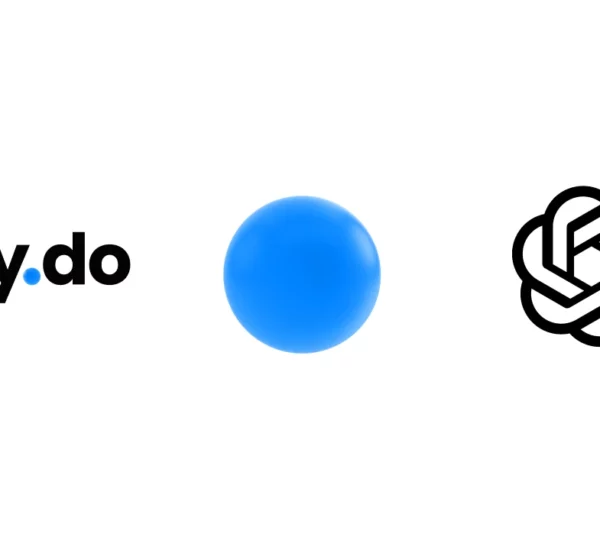Workplace flexibility has emerged as a vital aspect of employee satisfaction. The traditional 9-to-5 work model is gradually giving way to more adaptable arrangements, reflecting the changing needs and preferences of the workforce. As organizations strive to create environments that foster productivity and well-being, understanding the relationship between flexible work environments and employee satisfaction becomes crucial.
Creating a flexible work environment not only enhances employee morale but also contributes to improved performance. This article delves into the numerous benefits of workplace flexibility, effective employee satisfaction initiatives, and practical strategies for designing adaptable workspaces.
Understanding Workplace Flexibility Benefits
Increased Productivity
One of the primary benefits of workplace flexibility is the notable increase in productivity. When employees have the freedom to choose when and where they work, they can tailor their schedules to align with their peak focus times. This leads to better efficiency and output.
For instance, companies like Any.do and GitHub have adopted flexible policies, resulting in higher productivity levels. Employees report feeling more engaged and motivated when they can work in an environment that suits their individual needs.
Enhanced Work-Life Balance
Flexible hours dramatically impact employees’ personal lives, allowing them to manage their responsibilities more effectively. By accommodating personal commitments, employees experience reduced stress and increased satisfaction.
A case study from Salesforce demonstrated that employees with flexible work hours reported a 25% decrease in stress levels, significantly enhancing their overall well-being and job satisfaction.
Attraction and Retention of Talent
In today’s competitive job market, offering flexibility can be a significant advantage in attracting and retaining top talent. According to a survey conducted by FlexJobs, 80% of employees would choose a job with flexible work options over one without. Additionally, organizations that embrace flexible work arrangements experience lower turnover rates, saving them recruitment and training costs.
Employee Satisfaction Initiatives
Recognition Programs
Acknowledgment plays a crucial role in boosting employee morale. Implementing effective recognition programs can lead to higher levels of job satisfaction. For example, Google’s peer recognition system allows employees to appreciate their colleagues’ efforts publicly, fostering a positive workplace environment.
Feedback Mechanisms
Regular employee feedback is essential in understanding their needs and concerns. Utilizing tools such as SurveyMonkey or Officevibe can help organizations gather input efficiently. By actively seeking feedback, companies demonstrate that they value their employees’ opinions, which can significantly enhance satisfaction and engagement.
Career Development Opportunities
Providing training and advancement options is another key initiative that contributes to employee satisfaction. Organizations like LinkedIn invest heavily in professional development, helping employees grow their skills and advance their careers. This commitment to career growth fosters loyalty and increases overall job satisfaction.
Designing Adaptable Workspaces
Creating Collaborative Areas
Designing collaborative workspaces that encourage teamwork is essential in a flexible work environment. Open office designs, shared meeting spaces, and brainstorming zones can facilitate better communication and collaboration among team members.
Ideas for creating collaborative areas include:
– Flexible seating arrangements that can be easily reconfigured for group work.
– Interactive whiteboards and technology that support brainstorming sessions.
– Casual meeting spots to promote informal discussions.
Privacy and Quiet Zones
While collaboration is important, having quiet spaces for focused work is equally vital. Employees need areas where they can concentrate without distractions.
Design tips for creating effective private areas include:
– Utilizing soundproofing materials to minimize noise.
– Offering individual pods or booths for focused tasks.
– Incorporating natural lighting to enhance comfort and productivity.
Technology Integration
Utilizing technology to enhance workspace flexibility is critical. Tools such as Slack, Zoom, and project management software like Any.do enable seamless communication and collaboration, regardless of physical location. These technologies facilitate adaptable work environments and help teams stay connected.
Flexible Work Environment Strategies
Remote Work Policies
Implementing effective remote work policies is crucial for organizations embracing flexibility. Best practices include:
– Clearly defining remote work expectations and responsibilities.
– Providing the necessary tools and resources for employees to work effectively from home.
– Establishing regular check-ins to maintain communication and support.
Flexible Scheduling Options
Offering various flexible scheduling options, such as compressed workweeks or staggered hours, allows employees to choose their work hours. This autonomy can lead to improved job satisfaction and productivity.
Hybrid Work Models
Many organizations are adopting hybrid work models, combining remote and in-office work. Successful implementations can be seen in companies like Twitter, which allows employees to choose their work environment. This flexibility has resulted in higher employee satisfaction and engagement.
Employee Wellness Programs
Physical Health Initiatives
Promoting physical wellness in the workplace is essential for employee satisfaction. Initiatives such as on-site fitness classes, gym memberships, and ergonomic workstations can significantly enhance employees’ physical well-being. Companies like Microsoft offer comprehensive health programs that have shown to improve overall employee satisfaction.
Mental Health Support
Mental wellness programs are crucial in today’s work environment. Providing resources like counseling services, mental health days, and stress management workshops can foster a supportive atmosphere. Organizations like Salesforce prioritize mental health, enhancing their employees’ overall satisfaction and productivity.
Work-Life Integration Programs
Strategies that promote a healthy balance between work and personal life, such as flexible leave policies and family support programs, contribute to employee satisfaction. Offering integrated wellness solutions helps employees manage their work and personal responsibilities effectively.
Remote Work Satisfaction
Measuring Remote Employee Satisfaction
Assessing remote work experiences is essential for understanding employee satisfaction. Tools like Any.do for project management and Google Forms for surveys can help organizations gather valuable feedback. Key metrics to consider include:
– Employee engagement levels.
– Productivity indicators.
– Work-life balance assessments.
Building a Remote Work Culture
Fostering a sense of belonging in remote teams is vital for employee satisfaction. Strategies for building a remote work culture include:
– Regular virtual team-building activities.
– Creating channels for informal interactions through platforms like Slack.
– Celebrating team accomplishments and milestones.
Addressing Challenges in Remote Work
Common challenges faced by remote employees include feelings of isolation and communication barriers. Solutions to overcome these challenges involve:
– Encouraging regular check-ins and open communication.
– Providing training on effective remote collaboration tools.
– Offering resources for mental health support.
Enhancing Employee Engagement
Encouraging Open Communication
Transparent communication channels are essential in a flexible work environment. Tools such as Microsoft Teams and Zoom facilitate effective communication, enabling employees to stay connected and engaged.
Involving Employees in Decision-Making
Including employees in policy changes fosters a sense of ownership and commitment. Gathering input through surveys or focus groups can help organizations tailor flexibility initiatives to meet their employees’ needs.
Celebrating Achievements
Recognizing both team and individual accomplishments is crucial for maintaining high morale. Ideas for celebrating milestones in a flexible workplace include:
– Virtual award ceremonies.
– Social media shout-outs highlighting employee achievements.
– Organizing team outings or celebrations when possible.
Conclusion
In summary, creating a flexible work environment is essential for enhancing employee satisfaction and engagement. By understanding the benefits of workplace flexibility, implementing effective employee satisfaction initiatives, and adopting practical strategies for adaptable workspaces, organizations can foster a culture that promotes productivity and well-being.
Now is the time for organizations to embrace these strategies and invest in a flexible work environment that not only meets the needs of their employees but also drives success in today’s dynamic business landscape.

